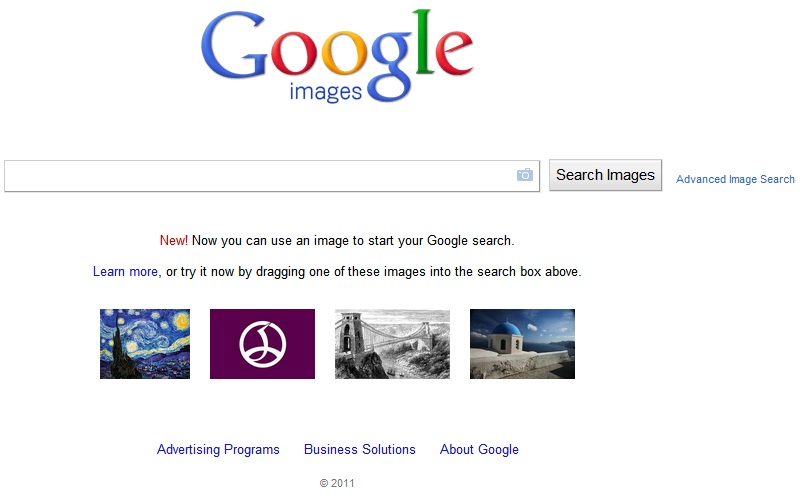Squeeze More SEO Juice From Your WordPress Images
Just about every good WordPress blogger uses images to enhance their content. A little bit of eye-candy gives your blog a lot more impact.
But that’s only half the story. As well as providing a visual complement to your text, photos and graphics can bring more organic traffic to your site, mostly via Google Image Search.

By following a few basic steps, you can optimize your images for Google and create more search engine exposure for your WordPress site.
Harness the power of image search traffic
We’re all familiar with Google’s ‘Image Search’ function, which pulls individual images from web pages and displays them according to the user’s search query.
Say, for example, I’m looking for some photos of crazy monkeys. I enter this search term in Google Images, and these are the results I get:
I click on the first thumbnail in the results (top left), and I’m taken through to a pop-up screen with the full sized image:
If I close that pop-up screen, I’m left on the webpage where the image originated from. Monkey-pictures.net has just scored a site visitor, by virtue of ranking well in Google Images.
If you optimize the photos and graphics on your website to rank in Google Image SERPs, you are opening yourself up to new streams of organic traffic.
People who find your website through image search results may never have found it through a conventional Google web search, so it’s important not to waste this SEO opportunity.
How to tweak your website images for maximum SEO
 Remember that Google cannot actually “see” your images in the same way a human web user can.
Remember that Google cannot actually “see” your images in the same way a human web user can.
Search engines rely on the data you provide to determine what an image is about, so it’s important that you give accurate and useful descriptions at every opportunity.
The more information you feed to Google about an image, the more easily that image can be classified and found in SERPs.
These are standard optimization techniques that you should apply to all images on your WordPress site.
Use a relevant and descriptive filename
Rename every image file before you upload it to your site, and always use a concise and descriptive filename. Generic filenames like Image 5.jpg or IMG0013.jpg aren’t going to do anything good for your SEO.
In the example image above, the filename is crazy-monkey.jpg, which clearly helps the photo rank in Google Images when someone searches for the phrase “crazy monkey” (or something similar).
Write a good alt text
The importance of the image alt text to SEO has been widely documented. If you’ve got three minutes to spare, in this video Matt Cutts nicely summarizes what the alt tag is and how you should use it.
FREE EBOOK
Your step-by-step roadmap to a profitable web dev business. From landing more clients to scaling like crazy.
FREE EBOOK
Plan, build, and launch your next WP site without a hitch. Our checklist makes the process easy and repeatable.
Make use of captions and titles
When you upload images through WordPress, you have the option to include a title and a caption. These are two more opportunities to provide descriptive information and give Google a sense of what the image is all about.

By default, WordPress uses your image filename as the title, but you can change this if you want.
Keep the image in context
Apart from the filename and alt text, Google also uses the content of the webpage to determine what an image is about.
If you’ve written a blog article about football, there’s not much sense including an image called pizza.jpg (unless the article somehow relates to football AND pizza).
If Google can’t see a coherent theme in the webpage AND the image, it’s likely that neither of them will rank well in SERPs.
 On occasions when you must use an image that’s not relevant to your content, you should still pretend that it is.
On occasions when you must use an image that’s not relevant to your content, you should still pretend that it is.
If you have a photo of pizza that you absolutely need to include, for whatever reason, in an article about football – use a filename and alt text that are relevant to football, not pizza.
This won’t work so well for image search, but it will help to optimize the webpage in general.
Don’t use excessively large image files
A JPEG image file straight out of your digital camera is way bigger than what you should be using on your website. Large files take longer to load on a webpage, which affects the user experience AND your search rankings in Google. Check out this article on optimizing your images for further info.
Last but not least – use good images!
Forgive me for stating the bleeding obvious here, but it’s worth stressing the point: the quality of your images is very important.
Sharp, colorful and visually-rich images are far more likely to get clicked in Google SERPs than crappy blurred photos.

If your own collection of images is fairly limited, you can search through Flickr and other photo sharing websites to find high quality pics for your website. (Remember to never publish someone else’s photo on your website unless it has been released under a Creative Commons license).
Compfight is a brilliant tool for finding high quality CC-licensed images on Flickr. We use Compfight every day here at WPMU and it kicks a whole lot of ass.
Over to you good folk – got any tips for getting the maximum SEO love out of your website images? Leave a comment and let us know.
Thanks to Stuck in Customs, Matthew Griff, Discovering Views and F1 Uffster for the photos.
Tags:



